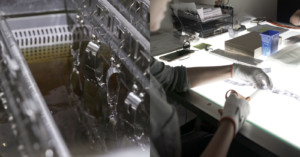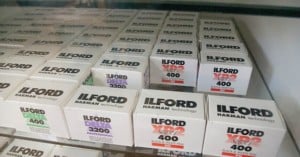
AGO Film Processor Is an Automated Tool for B&W, C-41, and E-6 Films
The AGO Film Processor aims to be an analog photographer's "gateway to effortless film development for B&W, C-41, and E-6 films."

The AGO Film Processor aims to be an analog photographer's "gateway to effortless film development for B&W, C-41, and E-6 films."

The digitized, Internet-connected world has actually made film photography easier. As one-hour photo labs began to disappear and many camera stores ditched the darkroom, mail-in photo labs have filled the void.

Film photography retailer Analogue Wonderland has announced the launch of its very own women-led processing lab, aptly named the Analogue WonderLab.

Analogico by ADEL has launched a compact and fully automatic programmable film processor called the Dev.a. This $4,290 tabletop film processor targeted at photographers in a range of environments, from a pro lab with high capacity to a casual home user.

Intrepid has announced a versatile darkroom enlarger that the company says is the most compact ever made. It is designed to make prints from both color and black and white film (from 35mm up to 6x9) without the need for filters. It can even be used to make scans of negatives using a digital camera.

If you’re a film geek like me, these numbers should look familiar, 5203, 5207, 5217, and 5219. These are the film stocks Kodak Motion Picture offers to film directors and cinematographers. Since 2014, Quentin Tarantino, Martin Scorcese, and J.J. Abrams partnered with former Kodak CEO Jeff Clarke, to spearhead an effort in protecting the use of celluloid in the motion picture industry.

LA-based analog photography company CineStill has just revealed the Cs6 "Creative Slide" 3-Bath Process, a family of slide film development kits that 'demystifies' slide processing and gives you unprecedented creative control over your results.

CineStill has just unveiled the °Cs "Temperature Control System" TCS-1000, an immersion circulator thermostat designed to simply and improve at-home film processing. It's essentially a sous vide stick that has been specifically designed for film photographers.

I was recently fortunate enough to get an inside and ‘behind-the-scenes’ look into how film processing works at Richard Photo Lab in Valencia, CA. As the step by step process is very complex, if you’ve ever wondered what the stages of film developing are and look like, come and take this video tour with us!

While some tinkers are building automated at-home solutions for film processing such as the Developist and Filmomat, Mexican photographer Pablo Zárate has created a much simpler processing aid: the Develophead. It's a film development tank cap that does agitation for you.

Here's a 16.5-minute video by OWL BOT in which photographer Omar Kenji demonstrates how you can develop C-41 color film in your own bathroom instead of passing it to a photo lab.

Developing your own 35mm or 120 film at home almost always requires a darkroom, but LAB-BOX wants to change all that. The new 'multi-format daylight-loading film tank' lets you develop your own film anywhere, even in bright sunlight if you'd like. No darkroom required.

Remember the Filmomat automatic film processor that went viral in December 2015? If you said "want!" when you saw that machine, there's good news for you: a new personal automatic film processing machine has already hit the market: it's called the Osiris F1.

If you're a film photographer, here's something you should be aware of: many film processing services at major drug and retail stores will no longer return your original film to you after developing and scanning it.

Good news isn't always easy to come by in the world of film; more often than not, the stories we run have to do with film being discontinued. But that's not always the case, and the most recent news out of Ilford should give film lovers something to smile about.

I know there are a few guides out there for home processing, some of which were instrumental in helping me get over my fears. All of these other guides seemed to be a little incomplete and that lack of detail made me wait longer than I should have before taking the plunge. In reality, it’s easy to do your film at home. Let me show you!